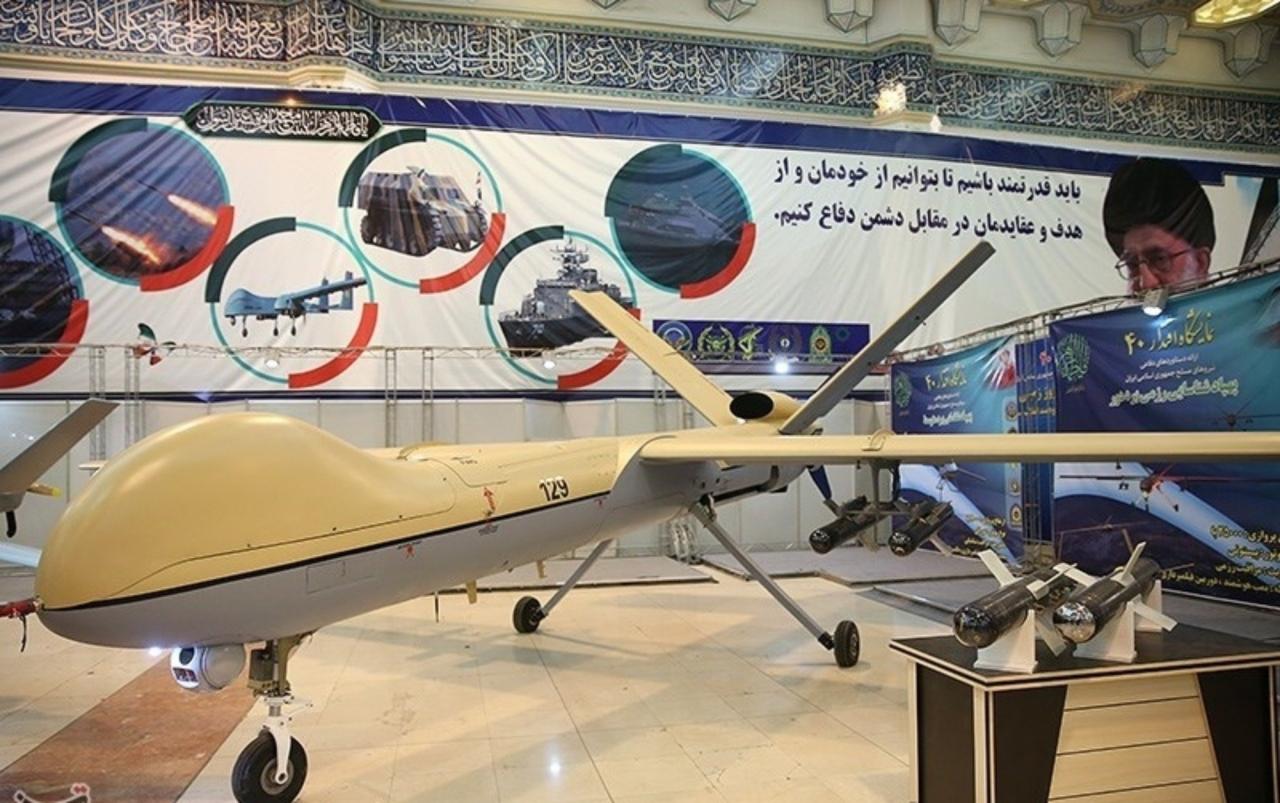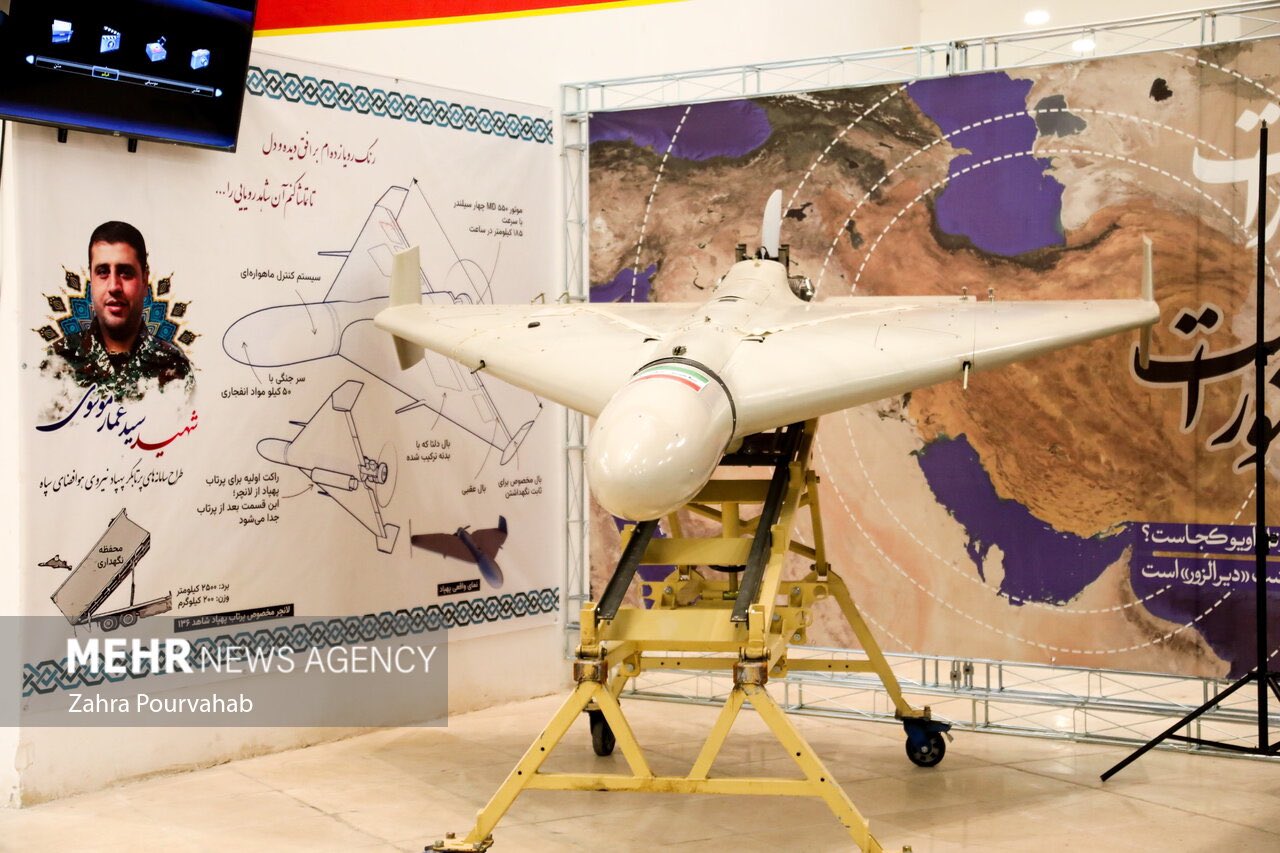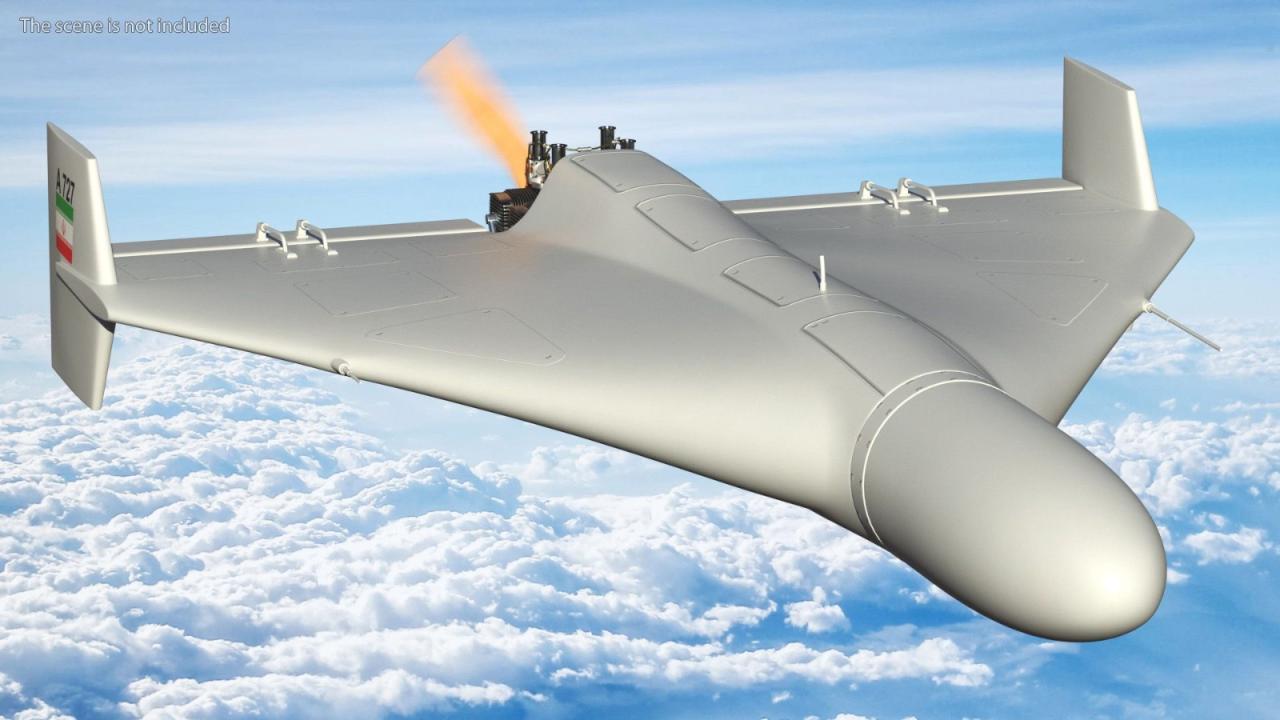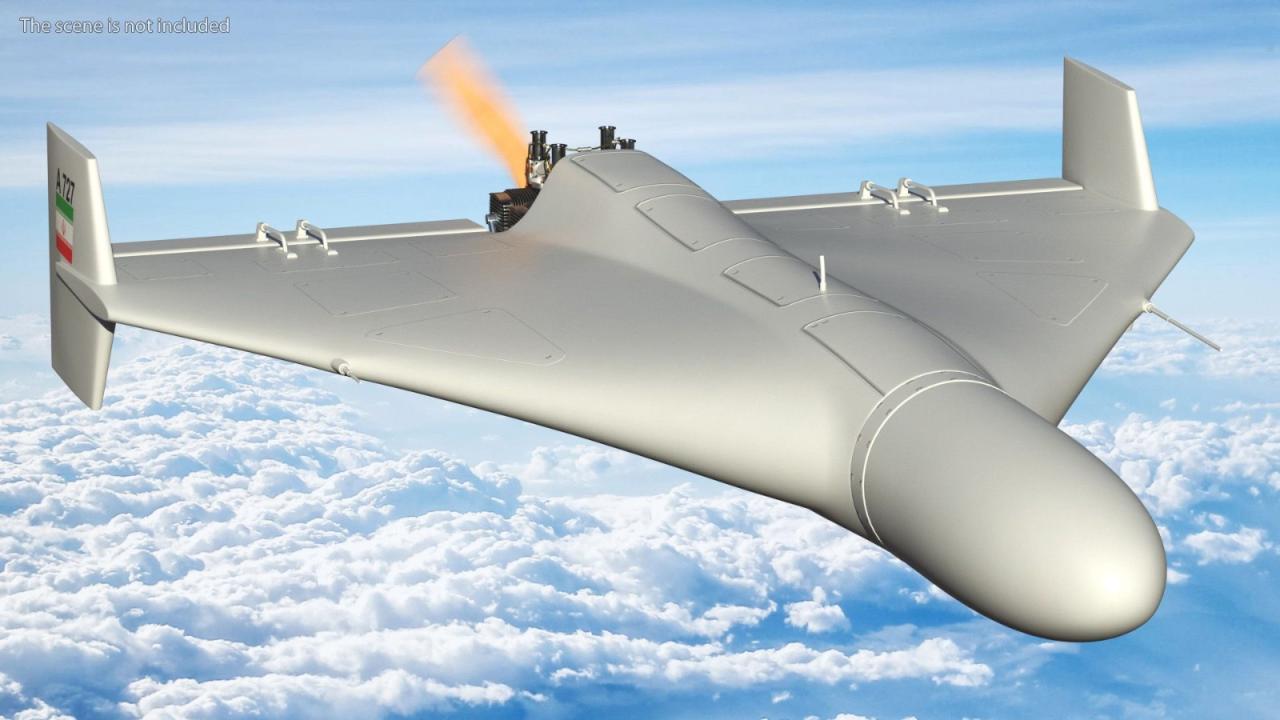Shahed drones, inexpensive and readily available, have significantly impacted modern warfare. Their relatively simple design belies a complex impact on global geopolitics and humanitarian concerns. This analysis delves into the design, operational capabilities, manufacturing, tactical employment, countermeasures, and broader implications of these unmanned aerial vehicles (UAVs).
From their origins to their widespread use in conflict zones, the Shahed drone’s journey reflects both technological advancement and evolving military strategies. Understanding their capabilities and limitations is crucial for navigating the complexities of modern conflict and developing effective countermeasures.
Shahed Drone: A Comprehensive Overview

The Shahed drone, a relatively inexpensive and readily available unmanned aerial vehicle (UAV), has significantly impacted modern warfare. Its proliferation across various conflict zones warrants a detailed examination of its design, operational capabilities, manufacturing, tactical employment, countermeasures, and broader implications.
Shahed Drone Design and Specifications
The Shahed drone family exhibits a consistent design philosophy prioritizing simplicity, affordability, and ease of production. Generally, these drones are characterized by a relatively small size, typically employing composite materials for their airframe to reduce weight and enhance durability. The exact dimensions and weight vary slightly between models, but they consistently maintain a low profile suitable for stealthy operations.
| Model | Approximate Dimensions (m) | Approximate Weight (kg) | Materials |
|---|---|---|---|
| Shahed-129 | Length: 6-8, Wingspan: 10-12 (estimated) | ~200 (estimated) | Composite materials, likely including fiberglass and carbon fiber |
| Shahed-131/136 | Length: 2-3, Wingspan: 2-3 (estimated) | ~20 (estimated) | Composite materials, likely including fiberglass and possibly reinforced plastics |
| Shahed-191 | Data unavailable | Data unavailable | Data unavailable |
| Shahed-149 Ghadir | Data unavailable | Data unavailable | Data unavailable |
Propulsion typically involves a small, relatively low-power internal combustion engine, usually fueled by gasoline or a similar readily available fuel. This choice contributes to the drone’s low cost and ease of maintenance. Payload capacity is limited, usually carrying a relatively small warhead (explosive charge) or other payloads, such as propaganda leaflets.
Shahed Drone Operational Capabilities

The operational capabilities of Shahed drones vary depending on the specific model. However, common characteristics include a relatively limited flight range, endurance, and speed compared to more sophisticated UAVs. Navigation and guidance systems are often a combination of inertial navigation systems (INS) and GPS, though some models may rely primarily on GPS. Communication systems, while generally effective within their operational range, are known to be vulnerable to jamming and disruption.
For instance, the Shahed-136’s reported range is approximately 2,500 km, with an endurance of around 10-12 hours and a maximum speed of approximately 185 km/h. These figures are approximate and subject to variation based on payload, weather conditions, and other factors.
Shahed Drone Manufacturing and Acquisition
The primary manufacturer of Shahed drones is believed to be Iranian entities, with significant involvement from related companies and potentially international collaborators. The precise cost of production is difficult to ascertain, but estimates suggest a relatively low cost per unit, contributing to their affordability and mass deployment. Distribution networks are believed to leverage both direct sales and indirect channels, utilizing various methods of transport to reach destinations.
The Shahed drone, known for its relatively inexpensive design and widespread use in conflict zones, has garnered significant attention. News of a recent drone incident further highlights concerns about such technology; a report details a drone shot down in NJ, as seen in this article drone shot down in nj , raising questions about airspace security and the potential for misuse of similar drones.
The Shahed’s proliferation underscores the need for improved counter-drone technologies and stricter regulations.
Shahed Drone Tactical Employment
Shahed drones are frequently employed using swarm tactics, overwhelming air defenses through sheer numbers. They are often used for attacks against infrastructure, military targets, and civilian areas, aiming to inflict damage and disrupt operations. While effective in achieving localized destruction, their relatively low precision and vulnerability to countermeasures limit their overall military effectiveness compared to more advanced UAVs.
The effectiveness of Shahed drones is debated and varies greatly depending on the target and the defensive capabilities present.
Countermeasures Against Shahed Drones
Numerous countermeasures are being developed and deployed to mitigate the threat posed by Shahed drones. The effectiveness of these countermeasures varies depending on the specific technology and the operational environment.
- Electronic Warfare (EW): Jamming GPS signals and communication links.
- Directed Energy Weapons (DEW): Using lasers or high-powered microwaves to disable drones.
- Kinetic Weapons: Employing small arms fire, cannons, or missiles to physically destroy drones.
- Netting Systems: Physically capturing drones with nets.
- Drone Detection Systems: Utilizing radar, acoustic sensors, and optical systems to detect and track drones.
Shahed Drone Impact and Implications

The widespread use of Shahed drones has had significant humanitarian consequences, causing civilian casualties and damage to infrastructure. Geopolitically, the proliferation of these relatively low-cost, effective weapons has altered the balance of power, empowering non-state actors and potentially destabilizing regions.
| Date | Location | Key Outcomes |
|---|---|---|
| October 2022 | Ukraine | Widespread attacks on energy infrastructure. |
| November 2022 | Ukraine | Significant damage to civilian infrastructure. |
| December 2022 | Ukraine | Multiple attacks on various targets. |
Shahed Drone Technological Advancements
Future advancements in Shahed drone technology could include improved navigation systems, increased payload capacity, enhanced stealth capabilities, and greater autonomy through the integration of AI. AI could enable more sophisticated targeting, swarm coordination, and autonomous decision-making, significantly expanding their capabilities. Adaptation for civilian use is less likely given their inherent military design, though some technologies might find applications in other fields.
The Shahed drone’s emergence as a significant military tool has sparked debate regarding its impact on warfare and international security. While its low cost and ease of use make it attractive to various actors, its effectiveness is contingent upon various factors, including countermeasures and the geopolitical context. Further research and development of counter-drone technologies are critical in mitigating the risks posed by these UAVs.
Questions Often Asked: Shahed Drone
What is the lifespan of a Shahed drone?
The operational lifespan varies depending on usage and maintenance, but it’s generally considered to be relatively short compared to more sophisticated UAVs.
How are Shahed drones guided?
Guidance systems vary across models, but generally involve a combination of GPS, inertial navigation, and potentially other systems depending on the specific variant.
The Shahed drone, known for its relatively simple design and low cost, has garnered significant attention. Its capabilities, however, are often compared to more sophisticated systems, such as those found in higher-end drones with cameras; for example, check out the wide variety available at drone with camera websites. Ultimately, the Shahed’s effectiveness stems from its numbers and its intended role in swarm attacks, a tactic that contrasts sharply with the precision capabilities of more advanced camera-equipped drones.
What types of explosives do Shahed drones typically carry?
They usually carry high explosives, designed for blast damage and fragmentation effects.
Are there any civilian applications for Shahed drone technology?
While primarily used militarily, the underlying technology could potentially be adapted for civilian applications like surveillance or precision agriculture, although ethical considerations are significant.
